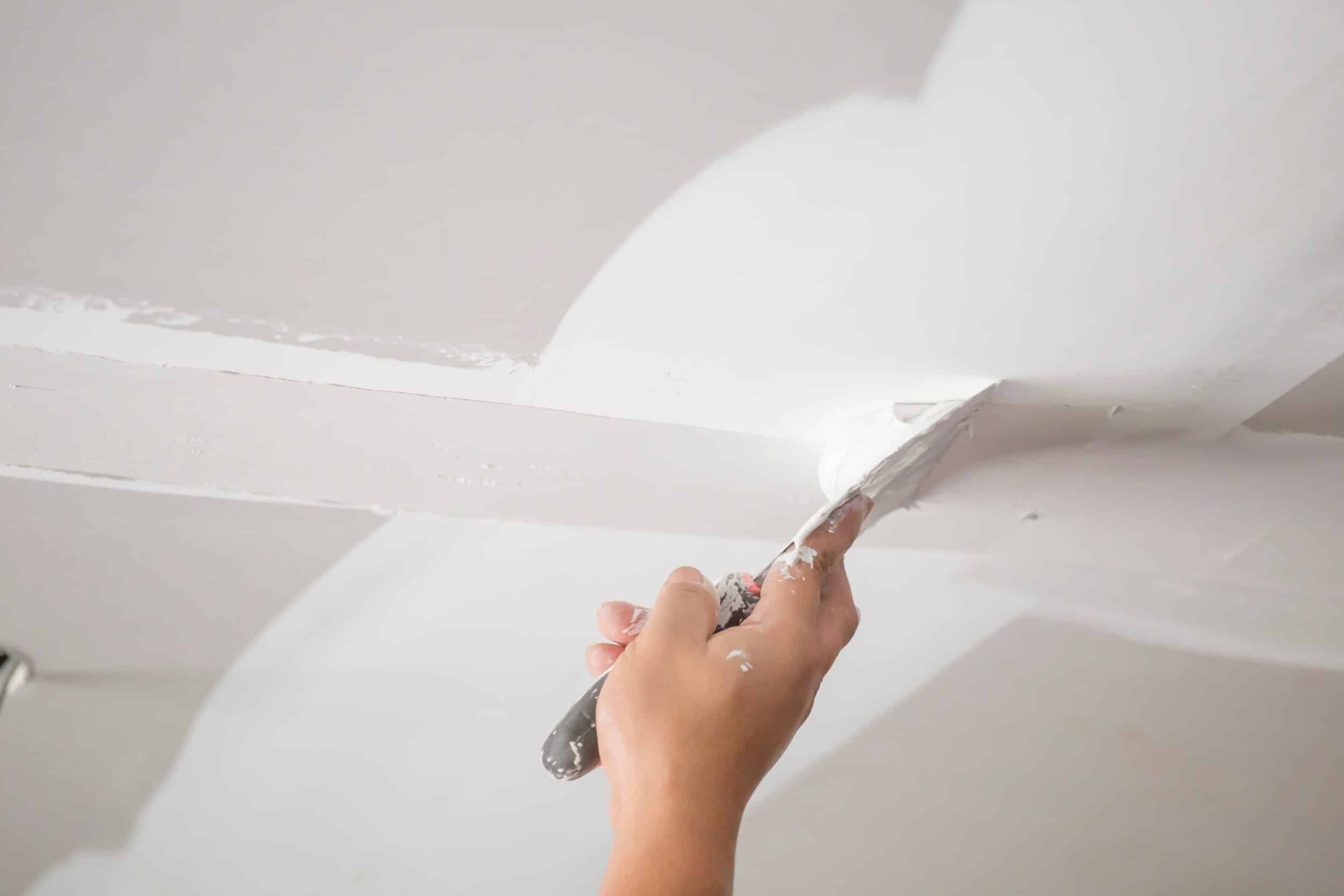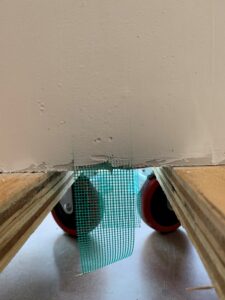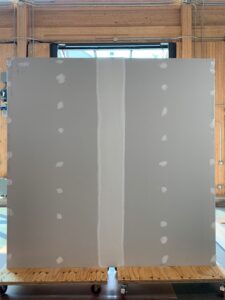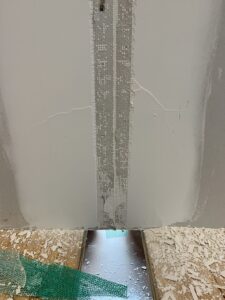
| Oct 28, 2021
How Can We Reuse Drywall?
Drywall is often not reused or recycled because of damage in the demolition process. But if we want to bring forward a more sustainable approach that’s rooted in Designing for Disassembly, we must consider the parts and components that go into an assembly. When looking at traditional wall assemblies, this in simple terms means metal framing, sheetrock, drywall tape and joint compound for the seams.
When investigating GreenZip, a type of durable drywall tape that has been installed in roughly 2 million linear feet, we were interested in testing how much (or little) damage there is when the tape is removed. Can a tape “unzip” the seam between panels of drywall, so it could be demounted and reused elsewhere?
The Test
Partnering with Anning-Johnson Company, we built a metal framed 8’x8’ wall at Co|Lab. Following standard production process for a wall assembly, we swapped in GreenZip drywall tape to seal the seams between each drywall panel. The installation team shared that in terms of applying the tape, it was definitively thicker and more durable tape than usually used. Typically the crew utilizes a puddy knife to cut traditional drywall tape, but the crew had to use an actual knife to cut the GreenZip product. The company does have an application tool that can be used, however, which includes a razor blade and supports application at height.
The Results
Once the joint compound dried across the seams, the tape was “unzipped” to remove the seam and try to demount the drywall. The tape was easily removed with little force relatively cleanly. This revealed the screws for removal and then drywall demounted for reuse. Based on these findings, a product of this nature could help with reusing drywall, assuming the team handling demolition and removal was prepared to do so. Though, even with minimal damage to the drywall, it would not result in an infinite loop of reuse – perhaps a few cycles if it was in good condition after removal and transportation each time. The company also has a partnership with Habitat for Humanity to take in these demounted panels as well.
One hurdle to implementing this product, which is also an opportunity, is how the product is priced. The cost is actually a percentage of a client’s projected tax savings. GreenZip has unlocked a way to make traditional wall assemblies “moveable” –meaning a building owner can depreciate the costs of non-load bearing walls faster, including the associated doors and utilities. This can have major financial benefits to the building owner’s cost model on a building, but can also be a hurdle to pricing the product in the first place. This means the product manufacturer is directly contracted with the building owner based on the project’s anticipated tax savings, versus being purchased by a subcontractor or even general contractor somewhere in the supply chain. In short, we view an approach like this as valuable in terms of making traditional walls moveable, and thereby reusing drywall, but it’s a tough market entry to leapfrog the supply chain and network of drywall contractors that are used to using their tried-and-true tape products.
HITT looks forward to further exploring moveable and demountable walls more in the future and how it can positively impact the entire supply chain, while proving valuable to our clients too throughout the life cycle of a building.




